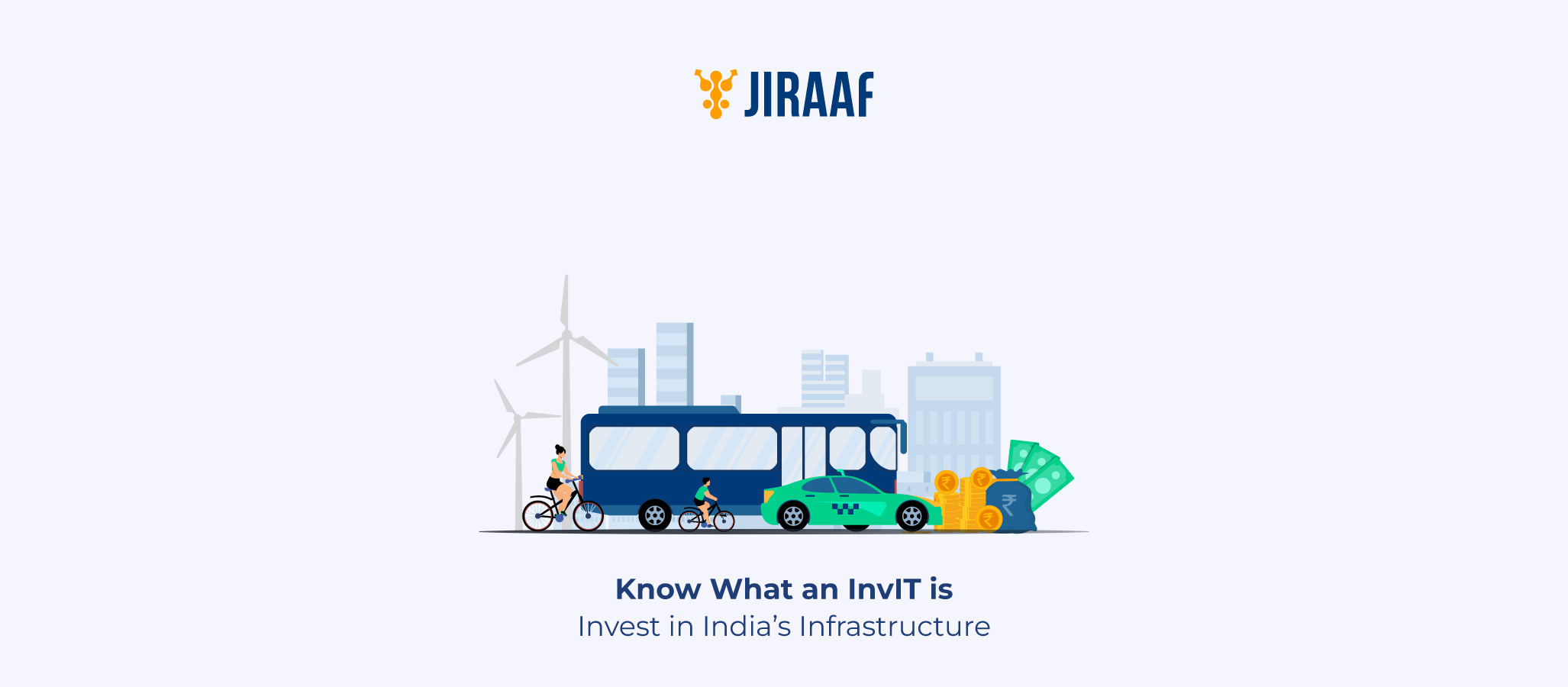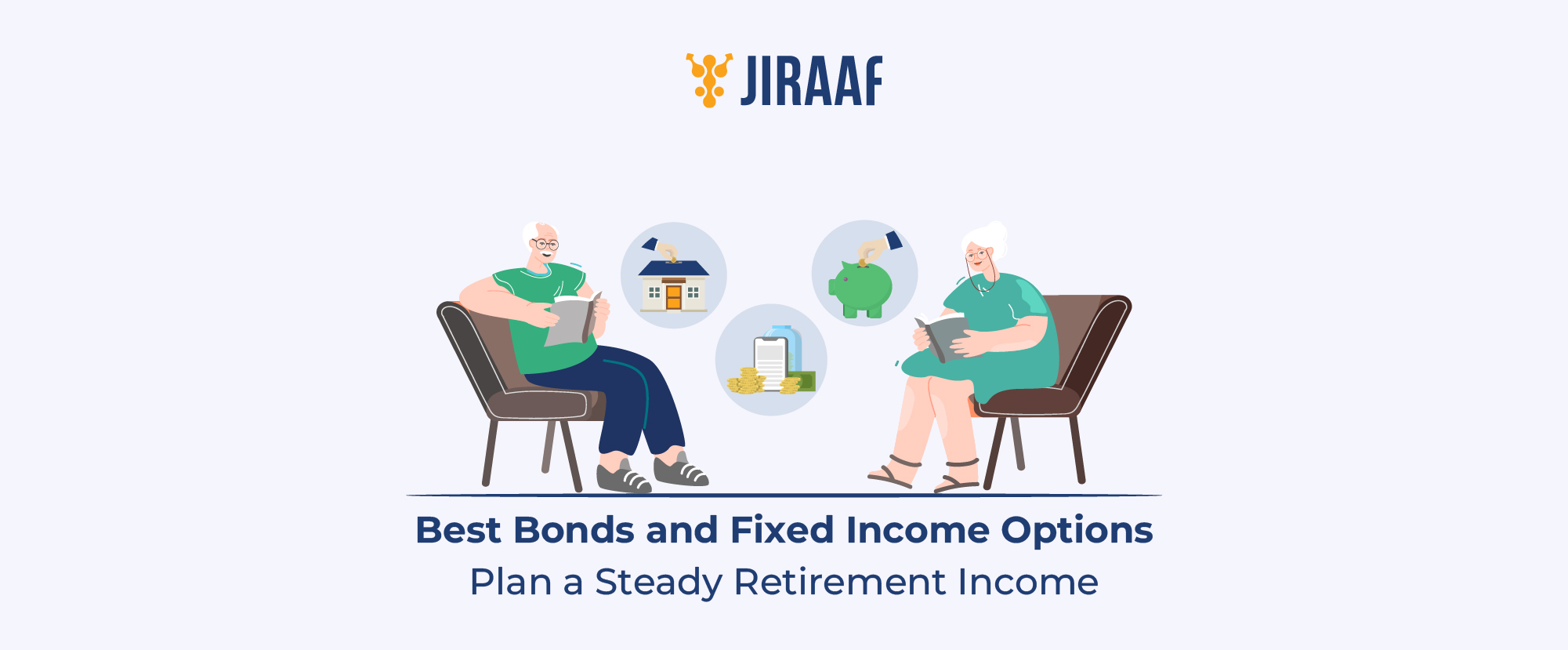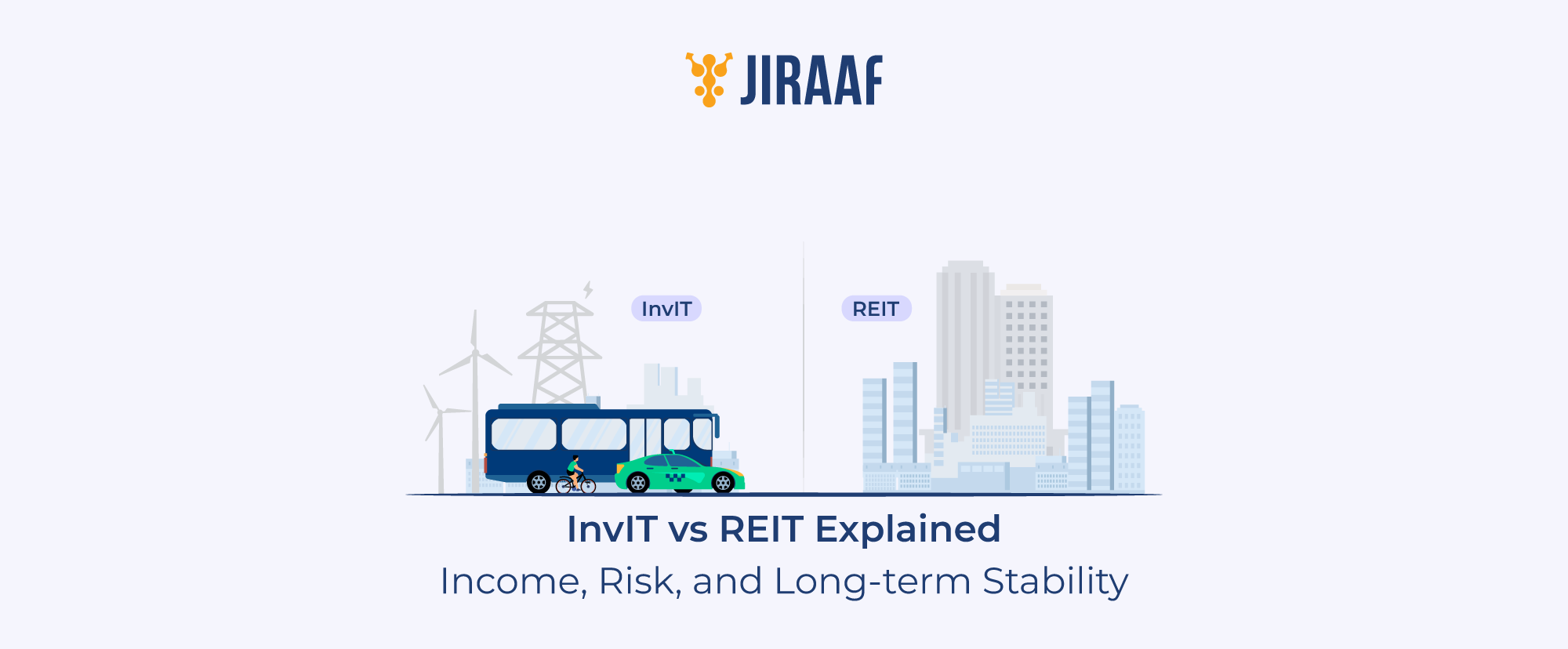As India moves closer to becoming a $5-trillion economy, the demand for steady infrastructure funding is rising fast, and every new airport, metro line, or solar park you see isn’t just changing how we live; it’s also quietly creating long-term wealth-creating opportunities for you. And this is where Infrastructure Investment Trusts (InvITs) come in. They allow retail investors to participate in large-scale projects such as highways, power grids, and pipelines, and earn from their cash flows.
But before you decide whether InvITs deserve a place in your portfolio, it’s essential to understand how they work and what sets them apart from traditional investments.
In this blog, we will discuss what InvITs are, how they work, their structure, and much more. Let’s get started.
Understanding Infrastructure Investment Trusts
An Infrastructure Investment Trust is a SEBI-regulated, collective investment vehicle that invests in revenue-generating infrastructure assets. It pools funds from multiple investors, including individuals and institutions, to finance large-scale infrastructure projects nationwide.
These projects can include roadways, highways, power transmission lines, renewable energy plants, communication networks, etc.
An InvIT operates in a similar manner to a mutual fund. While mutual funds typically invest in equities or bonds, InvITs invest in physical infrastructure assets. The returns generated by these assets, such as toll collections, user charges, and power transmission revenues, are distributed to investors as dividends and interest income.
However, for investors, the real point is how those assets translate into returns and liquidity. Let’s walk through the practical steps and discuss how money flows into an InvIT, how assets generate revenue, and how that revenue is distributed to unit holders.
The Working Mechanism of an InvIT
An InvIT raises cash by issuing units via public or private placements like initial public offerings (IPOs) and follow-on public offerings (FPOs). They use those funds to acquire the assets directly or through special-purpose vehicles.
Here’s a simple flow:
- The sponsor, trustee, investment manager, and project manager work together to establish the InvIT.
- 80% of funds must be allocated to completed income-generating infrastructure projects.
- The remaining 20% can be invested in other permissible assets, which include under-construction projects (subject to a maximum of 10% of the value of InvIT assets), or listed/unlisted debt of infrastructure companies.
- These assets generate toll, rental, and transmission fees.
- SEBI requires that at least 90% of the net distributable cash flow be paid to unitholders semi-annually for publicly listed InvITs and annually for privately placed InvITs.
- When you sell your units, you earn returns in the form of interest, dividends, loan repayments, and even capital gains.
Having understood the operational framework of InvITs, the next step is to examine their governance structure. Each InvIT operates through a defined set of entities responsible for management, compliance, and performance. The next section outlines these key participants and their respective roles.
Structure of an InvIT: Key Players Involved
Understanding the key players in an InvIT will help you see how responsibilities are divided and how transparency is maintained within the trust.
- Sponsor
The sponsor is the founding entity that sets up the InvIT. They must hold at least 15% of the total units for a minimum of three years, ensuring real “skin in the game.” To qualify, a sponsor must have a net worth of at least ₹100 crore and a minimum of five years of experience in the infrastructure sector.
- Trustee
The trustee acts as the independent guardian of investors’ interests. Registered with SEBI, the trustee ensures that the InvIT complies with all regulatory requirements and operates transparently. Importantly, the trustee must have no association with the sponsor, maintaining complete independence while safeguarding unitholders’ rights.
- Investment Manager
The investment manager is responsible for the InvIT’s financial management. They are responsible for making investment decisions and overseeing the assets of the InvIT. They make sure that investor capital is deployed efficiently and in line with SEBI regulations.
- Project Manager
The project manager oversees the day-to-day functioning of the infrastructure assets. They are not involved in investment decisions but focus on the execution, operation, and maintenance of projects such as roads, power lines, or transmission networks.
- Unit Holders
They are entitled to receive at least 90% of the net distributable cash flow, as mandated by SEBI, and hold voting rights on key decisions related to operations and regulations.
Types of InvITs in India
According to current SEBI regulations, InvITs can be classified into 2 major groups depending on how they are offered to investors and traded in the markets.
Privately held InvITs
Privately held InvITs are not publicly traded and cannot be purchased or sold on the stock exchange. All units of this type are owned privately by a small number of people or entities. SEBI has mandated a uniform minimum investment (allotment lot size) of ₹25 lakh for the primary market for privately placed InvITs, which aligns with the secondary market trading lot size.
Public-listed InvITs
Publicly listed InvITs are those that are listed on a stock exchange. Retail and institutional investors can both buy and sell units in a publicly traded InvIT on stock exchanges. The minimum investment for public InvITs is between ₹10,000 and ₹15,000.
Whether publicly listed or privately held, each InvIT type opens unique investment opportunities, but also carries certain risks tied to infrastructure and regulation. To make informed decisions, you should weigh both the advantages and potential challenges of investing in InvITs.
Benefits of Investing in InvITs
- Consistent Passive Income
InvITs are mandated by SEBI to distribute 90% of net cash flows. Meaning, you get consistent income on a monthly, quarterly, or semi-annual basis.
- Portfolio Diversification
They allow you to gain access to large-scale infrastructure assets without incurring significant upfront costs. They help to diversify your portfolio beyond just typical stocks and FDs.
- Professional management
Assets are managed by experienced sponsors and project managers, ensuring that investments are supported by industry expertise.
- Higher Liquidity
As NSE/BSE-listed instruments, InvIT units are more liquid than direct asset investments.
Risks and Limitations of an InvIT
- Infrastructure Risk
The performance of an InvIT largely depends on how well its underlying assets are used and maintained. For instance, a highway InvIT earns revenue from toll collections. If traffic volumes drop, earnings can decline. Similarly,
- Regulatory Risk
Changes in government regulations, toll policies, or the expiry of operating concessions can directly affect the cash flows generated by InvIT projects.
- Taxable Interest and Dividend
The income earned from interest and dividends of an InvIT is completely taxable as per your tax slab. This could easily impact your overall returns up to 30% if you fall under the highest tax slab.
Taxation on InvITs
The tax treatment of income from InvITs varies by type. Let us break it down.
Tax on Interest Income
Interest income from an InvIT is taxed as per your slab rate. If you fall under a 30% tax rate, the same rate of tax will be applied to your interest income, plus a 10% TDS as well.
Tax on Dividend Income
If the SPV doesn’t opt for the concessional corporate tax regime under section 115BAA, you won’t have to pay tax on the dividend. However, if it has opted for section 115BAA, your dividend will be subject to tax and a 10% TDS.
Tax on Capital Gains
Gains from selling InvIT units held for less than one year are taxed as STCG at 15% (before July 23, 2024) or 20% (on or after July 23, 2024). For holdings of more than one year, LTCG tax applies at 10% on gains exceeding ₹1 lakh (before July 23, 2024) or 12.5% on gains exceeding ₹1.25 lakh (after July 23, 2024), with no indexation benefits, provided STT is paid on transfer.
With the fundamentals and taxation aspects of InvITs clear, the natural next step is to see how investors can participate in them. Let’s look at the different ways you can invest in InvITs and start building exposure to India’s infrastructure sector.
How do You Invest in an InvIT?
Here’s a simple breakdown of how you can go ahead and invest in InvITs.
- IPO/FPO subscription
You can participate in new public offerings through an online broker of your choice.
- Secondary market
You can buy existing units on the NSE/BSE, similar to stocks.
- Minimum investment
The minimum investment for public InvITs falls under the range of ₹10,000-15,000 per unit. However, Early IPOs may demand higher sums.
Conclusion
As India continues to build faster highways, smarter cities, and greener energy networks, InvITs are quietly opening the door for everyday investors to be part of that growth.
They turn large-scale infrastructure into accessible, income-generating investments, allowing you to participate in the nation’s progress and not just witness it. As this asset class evolves and awareness grows, InvITs could soon become a cornerstone of diversified portfolios, blending stability, transparency, and a front-row seat to India’s growth story.









